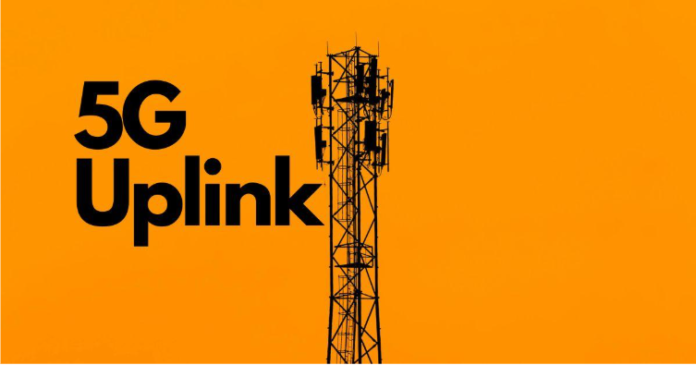Recent field demonstrations have confirmed that uplink speeds on 5G networks can now exceed 550 Mbps under controlled testing conditions. This was achieved through a combination of advanced 5G Release 17 features, including uplink transmission switching and carrier aggregation. These enhancements directly improve the uplink channel’s throughput and reliability, allowing more demanding applications to function with less latency and higher stability. So, now let us look into achieving 550+ Mbps 5G Uplink along with Smart LTE RF drive test tools in telecom & Cellular RF drive test equipment and Smart Wireless Survey Software Tools & Wifi site survey software tools in detail.
Uplink Performance in 5G: Why It Matters
While much of the attention in 5G has been placed on download speeds, uplink performance is critical for a growing number of use cases. Applications such as live video uploads in 4K or 8K, real-time augmented reality (AR), virtual reality (VR), and cloud-based gaming platforms rely on consistent, high-bandwidth uplink capacity. These applications demand not only higher uplink throughput but also minimal jitter and delay.
In practical deployments, the uplink channel has historically lagged behind the downlink in performance. The reason stems from asymmetrical spectrum allocations and device power limitations. By enhancing the uplink using techniques like transmission switching and carrier aggregation, engineers can now enable a more balanced user experience, especially in use cases requiring two-way high-data-rate communication.
How Uplink Transmission Switching Works
Uplink transmission switching allows a device to alternate between different antenna panels or transmission schemes based on real-time radio conditions. This enables dynamic optimization of signal quality and spectrum use. In non-technical terms, the system can choose the best path to send data at any given moment, improving stability and peak throughput.
This is particularly useful in dense urban environments, indoor settings, or during mobility—conditions where signal obstructions or reflections are common. Adaptive transmission switching can maintain high data rates by avoiding signal loss or degradation.
Carrier Aggregation: Uplink Edition
Carrier aggregation has been a core part of LTE and 5G downlink evolution, but its use in the uplink has seen slower progress. That is changing. Aggregating two or more frequency bands in the uplink allows a device to transmit more data simultaneously, thereby significantly increasing the uplink capacity.
In the recent demonstration, two Time Division Duplex (TDD) bands were combined: n77 (3.3–3.8 GHz) and n78 (3.5–3.7 GHz), configured for uplink carrier aggregation. When coordinated with advanced scheduling algorithms, the system achieved over 550 Mbps uplink throughput—nearly 10x the average uplink performance seen on early 5G networks.
This aggregation was accomplished while maintaining signal quality (Signal-to-Interference-plus-Noise Ratio or SINR) and consistent connection reliability. These results validate the uplink performance boost achievable with current 5G specifications.
Hardware Requirements for High-Speed Uplink
To achieve these uplink speeds, test setups included devices equipped with recent modem platforms compliant with 3GPP Release 17. These platforms support features like:
- 2x uplink carrier aggregation (CA)
- Dynamic Spectrum Sharing (DSS)
- Transmission switch diversity
- Uplink power control improvements
It’s worth highlighting that such results require both the device and the network infrastructure to support the latest uplink features. This includes base stations capable of handling simultaneous uplink traffic from multiple users across multiple bands.
Target Applications: Where This Matters
- 4K/8K Video Uploading
Content creators working in high-definition formats need stable uplink bandwidth. Whether uploading to cloud storage, social platforms, or streaming servers, the network must handle large data volumes with minimal delay. High uplink throughput ensures minimal buffering and consistent transfer speeds.
- Augmented and Virtual Reality
AR/VR systems—particularly those used in industrial simulations, medical training, or real-time gaming—require constant, low-latency, high-throughput communication between the user’s device and edge/cloud servers. Even short dips in uplink capacity can break immersion or reduce accuracy in AR overlays and virtual interactions.
- Real-Time Cloud Gaming
For cloud-based games where all rendering occurs off-device, uplink performance is often overlooked. However, control signals, audio streams, and video feedback also travel from the user to the cloud. Delays or loss in uplink packets can disrupt gameplay, causing lag or disconnection. A robust uplink channel stabilizes these signals and supports more users concurrently.
- Live Streaming and Broadcasting
Professional livestreaming platforms and remote media coverage increasingly use mobile networks as primary uplinks. Events, field interviews, or drone footage broadcasting need dependable uplink performance for uninterrupted feeds. When multiple high-bitrate video streams are uploaded simultaneously, uplink congestion can cripple output quality. Carrier aggregation in uplink alleviates this constraint.
Implications for Network Operators
Operators planning for commercial deployment of high-throughput uplink features must consider several aspects:
- Spectrum Strategy: Assigning sufficient bandwidth for uplink carriers, especially in mid-band frequencies (3.5 GHz), becomes more critical.
- Infrastructure Readiness: Small cells and Massive MIMO systems need firmware upgrades to enable simultaneous multi-band uplink handling.
- Device Ecosystem: Widespread benefits will only be realized when consumer and enterprise devices support Release 17+ uplink features at scale.
- Backhaul Capacity: Increased uplink throughput from user devices means higher upstream load on the backhaul network, which must be provisioned accordingly.
What’s Next?
Uplink improvements will continue with 5G Advanced and upcoming 6G research. Future enhancements may include:
- Higher-order MIMO on uplink
- Further optimized dynamic spectrum allocation
- AI-based scheduling at the base station
- Edge processing to reduce data volumes
As these capabilities are rolled out commercially, users will experience faster uploads, lower latency, and better service continuity, particularly in two-way communication scenarios.
About RantCell
RantCell is a mobile network testing solution designed to measure 2G, 3G, 4G, and 5G performance using regular Android smartphones—no additional hardware required. It enables operators, consultants, and enterprises to conduct drive tests, indoor surveys, and remote monitoring at scale. Also read similar articles from here.
- Perform RF surveys
- Collect QoE/QoS metrics
- Analyze data via cloud dashboard
- Reduce cost vs traditional test tools

